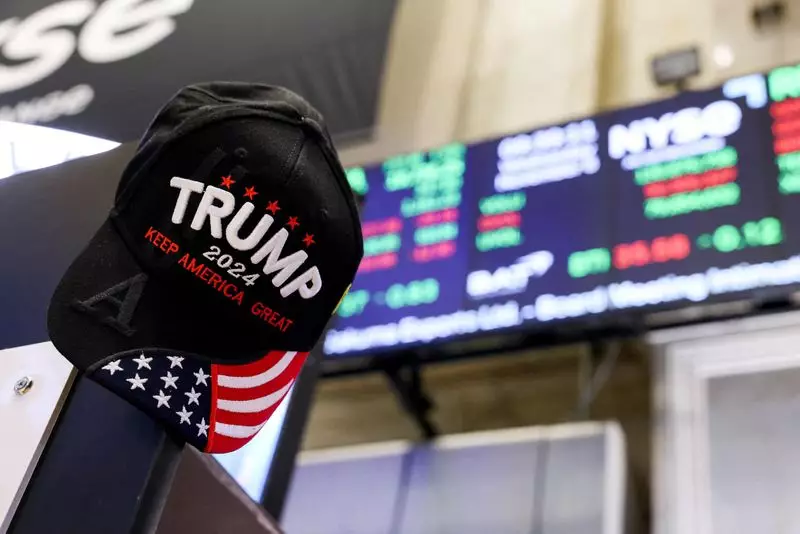In the complex landscape of global finance, the dollar has recently shown signs of resilience, recovering from a period of decline. This shift is noteworthy, particularly following unexpected affirmations from President-elect Donald Trump. Previously, the former president had embraced a weaker dollar to address the U.S. trade deficit. However, his recent statements suggest a pivot towards a stronger dollar paradigm, sending ripples through international markets, notably impacting the Chinese yuan, which plummeted to a three-month low against the dollar.
The reaction of the yuan to Trump’s renewed optimism towards the dollar underscores the delicate balance that currency values maintain in relation to U.S. economic policy. This is particularly critical as currencies are often seen not just as mere financial instruments but also as reflectors of national economic strength. The immediate market response indicates that investors perceive the potential for reduced volatility in U.S. dollar policy—an encouraging sign for those who wish for a stable economic climate.
Furthermore, the yen has also seen fluctuations, rising approximately 0.5% against the dollar, even as Bank of Japan’s Kazuo Ueda hinted at potential rate hikes based on favorable economic indicators. Ueda’s assertion that Japan’s business investment surged by 8.1% in the third quarter is an essential component for the markets, signifying that Japan may be primed for a monetary policy shift. The juxtaposition of Japan’s potential rate hikes with the Fed’s impending decisions creates a compelling dynamic in the currency systems, leading to speculation and strategic movements by investors.
As we approach the end of the year, the U.S. job market becomes a focal point in determining future fiscal policies. With estimates suggesting a rebound of 195,000 jobs in November, the forthcoming employment data may impact Fed decisions in significant ways. Notably, some forecasts hint at higher job additions due to a reduction of external shocks, such as hurricanes and strikes. Such conditions could instigate a more aggressive Fed posture versus the dovish inclination of recent months.
However, the predicted uptick in unemployment to 4.2% could complicate the narrative. This data will certainly shape the expectations of monetary policy adjustments during the crucial meeting on December 18. Ultimately, the Federal Reserve’s course will depend heavily on these pre-meeting indicators, making it vital for analysts and investors alike to scrutinize the evolving job market closely.
In Europe, anticipation builds surrounding the European Central Bank (ECB) as it grapples with its monetary policy challenges. The expected 25 basis point cut on December 12 is perceived as imperative, yet the markets suggest a slight probability of a more aggressive 50 basis point reduction. With the ECB rates huddled below those of the Fed, the European financial landscape presents a stark contrast that could leave the euro vulnerable if the ECB does not act decisively.
Of particular concern are the political developments in France, with the far-right National Rally’s potential to instigate a no-confidence vote raising the specter of political instability. The implications for budgetary policies could be severe, possibly widening the deficit to 6% of GDP. Such a scenario could render France’s borrowing costs comparable to those of Greece, thus exacerbating the region’s financial anxieties.
Lastly, the Russian rouble remains a currency of concern following its near-collapse last week, exacerbated by government tacit approval of its depreciation. With commodities priced in dollars, this strategic maneuver hints at an effort to maximize export revenues despite the associated risk of inflation and economic instability domestically. This tactic reflects a calculated risk that underscores the interconnectedness of global economies and the precarious nature of currency markets.
In a rapidly shifting economic environment, the landscape of global currency is anything but predictable. As the dollar seeks to reclaim its strength and European and Asian economies navigate their respective challenges, understanding these moving parts is crucial for stakeholders. Policy decisions, employment data, and geopolitical developments will all play pivotal roles in shaping the future dynamics of currency markets, making it imperative that investors remain vigilant and adaptable. The interplay among these factors reveals just how intertwined our global economy truly is and how nations navigate their financial destinies amidst constant change.

